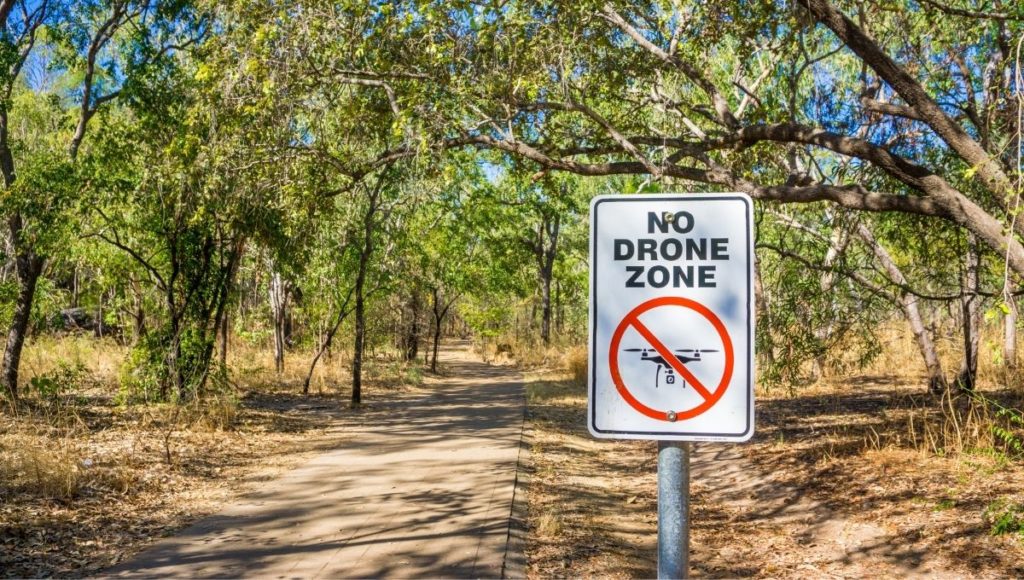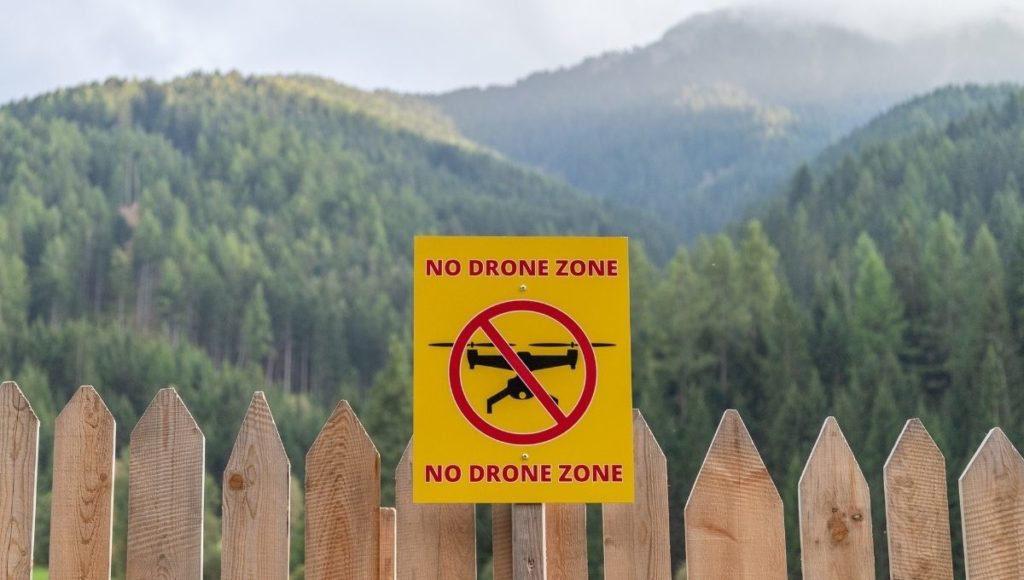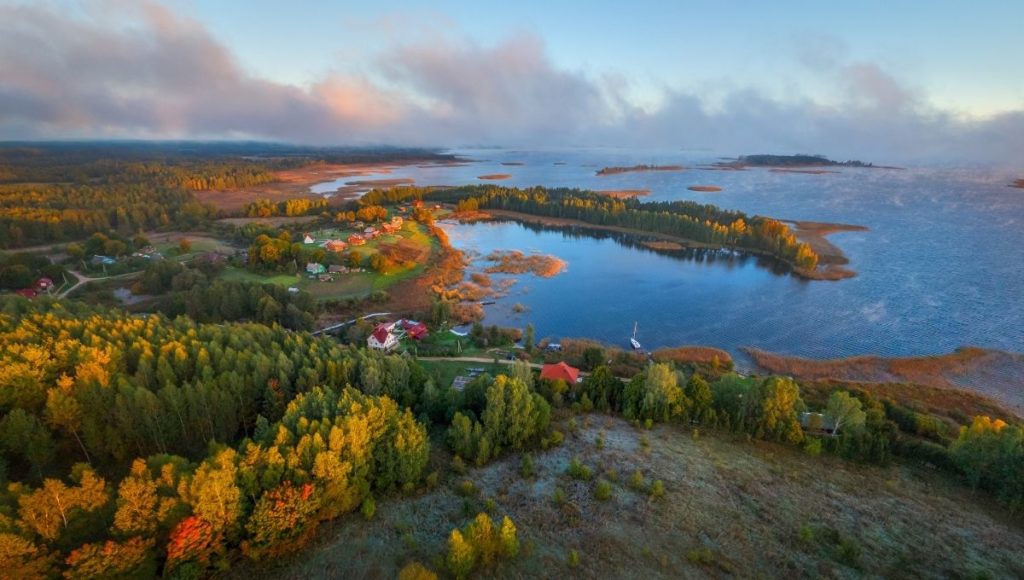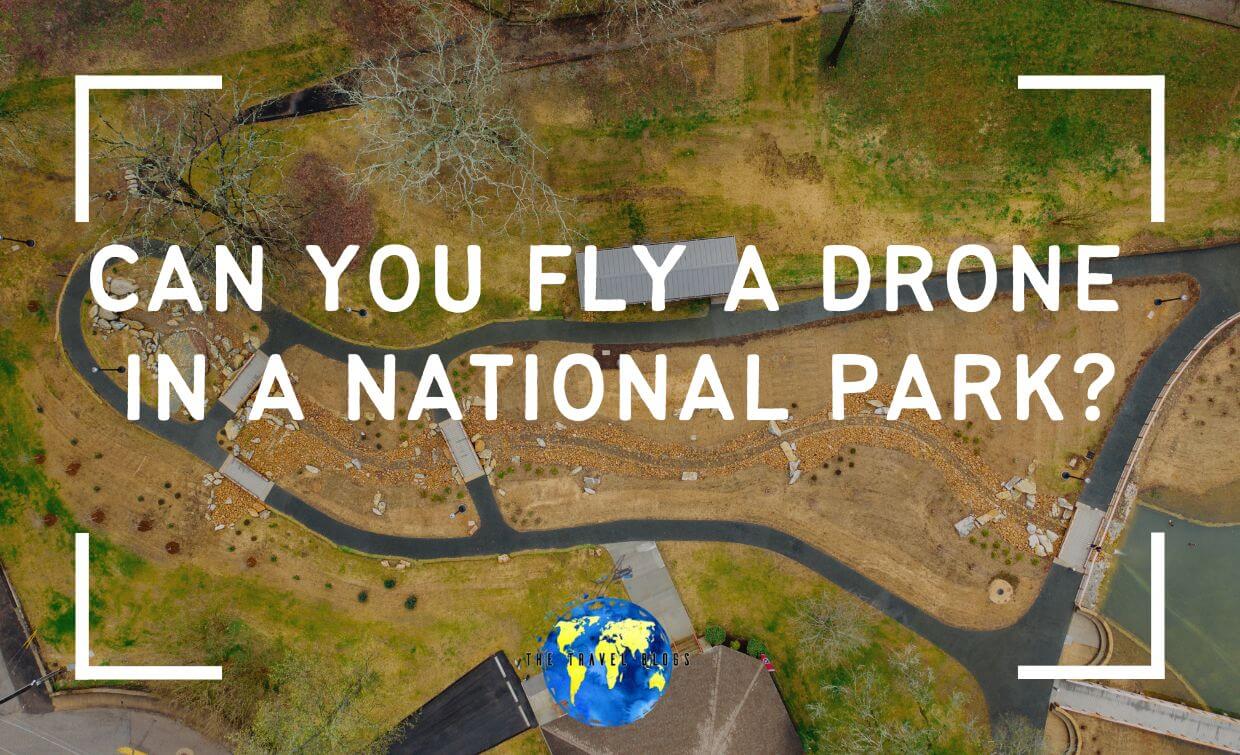A drone is a great way to explore nature and the world around you while getting some fantastic photos and video, but what about flying a drone in national parks?
These public areas are perfect for capturing stunning images from a bird’s eye view. However, before you embark on your journey, be sure to read up on any specific regulations that may apply at each location.
Coming your way in this post - click to expand ->
Note – Please know, some of the external links on this page are affiliate links, this means that if you purchase after following one, I make a small commission from the sale at no additional cost to yourself.
You may also enjoy:
Can You Fly a Drone in a National Park?

No. Since 2014 it has been illegal to fly a drone in US National Parks. The Policy Memorandum 14-05, released in June 2014 by the National Parks Service (NPS), prohibits the launching, landing, or operation of unmanned aircraft. If you do, you could face a fine of $5000 or up to six months in prison.
But are there workarounds? Let’s take a closer look.
Drones in National Parks
The popularity of drones in the US has absolutely exploded over the past five years. Drones have revolutionized photos and videography for the masses.
Although The National Park Service claims they are working to create a consistent and fair approach to drone usage throughout the United States. Currently, many parks have instituted strict rules against flying drones within their borders. In contrast, others require permits or advance permission from park officials.
However, the permits are pretty much impossible to get as a hobbyist drone enthusiast.
What Does the Ban Mean?
Basically, drones aren’t allowed to use in US National Parks, which is a shame as the NPS controls more than 400 parks, 20 trails, and 60 rivers. The federal government owns roughly 640 million acres, about 28% of the 2.27 billion acres of land in the United States.
What if I’m an FAA-Certified Drone Pilot?
I’m afraid it doesn’t matter. The ban on drones is a blanket prohibition on recreational and commercial drone pilots in national parks, whether you are approved by the Federal Aviation Administration (FAA) or not.
What Exceptions are There to the Ban on Drones in National Parks?

The NPS ban on drones is not currently enforced in national parks. However, NPS does allow for a Special Use Permit for uses such as search and rescue, research, and fire safety.
What About if I Take Off and Land Outside the Park Boundaries?
So, according to the rules:
“Launching, landing, or operating an unmanned aircraft from or on lands and waters administered by the National Park Service within the boundaries of [insert name of park] is prohibited except as approved in writing by the superintendent.” – NPS
So, as long as your drone flight is in an area where flying is permitted, you should be OK, but remember the FAA drone laws will still apply. Hence, it means no flying above crowded places, and you must have a visual line of sight of your drone at all times.
You can’t rock up outside the park with your long-range drone and fly 3 miles into it with your FPV Goggles.
Aside from that, it will be frowned upon, and if they find you flying your drone right on the border of a National Park, there is no doubt there is some rule infringement they’ll be able to slap you with. So while it is OK, it’s not recommended.
Why is There a Ban on Drones in National Parks?
Ban was imposed after several individual bans were made at various US national parks.
The ban stems from serious concerns about the negative impact that flying unmanned aircraft is having in parks.
The NPS was also concerned about the noise and distraction of a drone. Of course, drone operators could just avoid populated areas to address this complaint, but that would still leave us with the NPS’s concerns about the negative impact drones have on animals and the environment.
Drones were just starting to be mainstream in 2014 and were a perfect storm for a blanket ban to be issued, says director of National Park Service Jonathan Jarvis.
The History Behind the Ban on Drones in National Parks

In 2011, Raphael Pirker was stopped by park rangers in Grand Canyon National Park for flying a small Styrofoam drone.
Park rangers issued a $325 ticket for flying the drone and seized his memory card, but the law banning it wasn’t designed for the drone use of drones didn’t exist then.
In May of 2014, Yosemite National Park issued a ban on drone use anywhere in the park. The following month the NPS issued a blanket ban prohibiting drones in all national parks across the US Drones such as The Grand Canyon, Zion National Park, and Yellowstone National Park.
If a drone is spotted in the air, park rangers will issue violation notices with fines for flying drones over sensitive wildlife areas. In addition to that, they can also seize the drone and any other tools needed to fly the unmanned aircraft.
What are the Penalties for Flying a Drone in a National Park?

Violating the ban on flying unmanned aircraft in national parks is considered a misdemeanor. If caught, you could face up to six months of jail time and a fine of up to $5000.
And if you’re really unlucky, or stupid, you may even get tasered!
But Will I Get Caught?
Well, it shouldn’t matter, just don’t do it. But if you want to know more about drone lawsuits, Vice were able to get their hands on records for ll of the fines issued to irresponsible drone owners. It makes very interesting reading.
You can also check this page that shows you all of the open cases. Again, some of the reasons are pretty interesting.
It seems like you are unlikely to get caught. But, even if you do get away with it, doesn’t mean you are safe as this guy found out. It’s becoming a tactic of governing bodies to use YouTube footage to clock illegal flights and issue fines in the post.
How Can I Be Sure I’m Doing the Right Thing?
If you are not careful, it can be easy to find yourself flying in a National Park and breaking the law by accident. Don’t get caught out, and be sure you know where you are flying. Basically, think ahead and plan.
The Aloft app (iOS and Android) and B4UFLY app (iOS and Android) both are free to download and show locations where drone flights are not allowed.
Is the Drone Ban in National Parks Justified?

It’s a huge shame as, understandably, National Parks are some of the nicest areas in the US to fly a drone for some incredible footage.
Personally, I completely understand why it exists. Still, I think a blanket ban is no longer the right thing to do when there are so many other options.
While the 2014 legislation was a sweeping reaction, there are no signs of it changing anytime soon.
However, one thing that has changed is drones. The type of drone you could get in 2014 was nowhere near as sophisticated as they are now. Most drones now come with GPS in-built; flying them is a cinch, and with a bit of practice, it is hard to crash them.
Also, when you look at some of the things allowed in National Parks, ATVs, for example, that kind of makes their initial noise accusation a bit redundant.
I think it is the case that a few silly people with drones ruined it early on, and drone enthusiasts are still paying the price. Hopefully, with the improvement in technology, the NPS will see that drones should not be feared and can explore ways to allow them.
A simple solution could be that if your drone is registered and tagged, and you can prove a certain level of personal liability insurance, you could apply for a daily pass and pay a fee for it. There would then be areas in the park that drone flying is allowed, and the park wins as it makes money and responsible drone owners get to fly.
On the flip side, it does make it hard to police.
What About Wilderness Areas? Can I Fly my Drone There?

Sorry, no. However, this is nothing to do with new laws. In fact, one passed in 1964 states that in a designated wilderness area, there “shall be no use of motor vehicles, motorized equipment…no landing of aircraft, no other form of mechanical transport…”.
Drones and model airplanes fall into this, so, unfortunately, the 111 million acres that make up The National Wilderness Preservation System, more than 760 wilderness areas, are all no-fly zones.
What About National Forests?
Yes, but the U.S. Forest Service has designated “no-fly zones” in more than 60% of the national forests that they manage. Areas in which drones are prohibited include; campgrounds, developed recreation sites, trails, and lakeshores. This restriction also applies to drones flown for commercial purposes. It is recommended that visitors read the forest service flyers and contact them with any questions.
Can I Fly My Drone in State Parks?

It seems that people are allowed to fly drones in state parks, but there are many different rules on this. For example, one State Park may require permits or advance permission from park officials, while others prohibit flying drones altogether.
Basically, the NPS is a national body, so they can impose country-wide laws. However, when it comes to state parks, they make their own at a state or even county level, and as you can imagine, it becomes a pretty mixed bag.
If you are ever unsure, just try to check the park website or contact the park rangers beforehand and avoid any penalty.
Final Thoughts on Drones in National Parks
While it is currently illegal to fly a drone in a National Park, I hope that they see the changes in technology are making drones safer and hope that they will revisit the blanket ban one day. However, I don’t expect it to be any time soon.
There are still plenty of stunning places to enjoy your drone; just please do so responsibly.
What do you think? Is the ban fair? Let us know in the comments.
